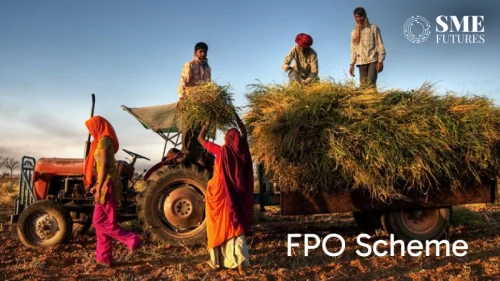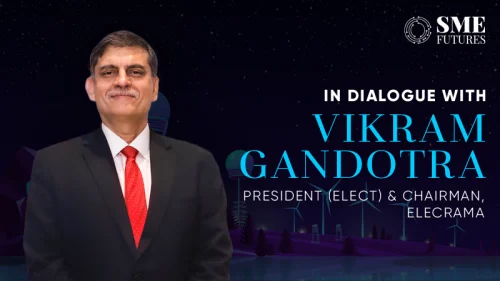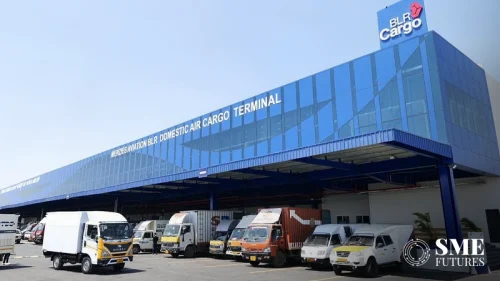The COVID-19 pandemic has had a significant impact on the economy, and the financial services industry is no exception. The non-banking financial corporations (NBFCs) have had to navigate through the challenges and opportunities presented by the pandemic. In an interview with SME Futures, Raul Rebello, MD and CEO-Designate of Mahindra Finance, shares his insights into the current state of the NBFC industry, the role of digitisation, the trends in vehicle leasing and subscription, and the outlook for growth in various product lines.
Here are the excerpts from the interview:
How has the NBFC industry been impacted by the pandemic, and what are the challenges and opportunities moving forward?
Every sector under the BFSI (Banking, Financial Services and Insurance) fold witnessed a different growth trajectory post the COVID-19 pandemic. However, overall, FY 22 & 23 are turning out to be rebound years for the NBFCs (Non-Banking Financial Corporations) in terms of growth and profitability, after experiencing deterioration of RoA (Return on Assets) and RoE (Return on Equity) outcomes in FY 21.
The MSME (Micro Small and Medium Enterprises) businesses, which play a pivotal role within the Indian economy, were the most affected by the pandemic. Schemes such as the ECLGS (Emergency Credit Line Guarantee Scheme) programme, introduced by the government during the pandemic, have helped MSME units to maintain their liquidity and address their operating inconveniences which they were facing due to the difficult period that we were all living in. The government launched ECGLS as part of its Rs 20 lakh crore comprehensive package announced by the Finance Ministry on May 13, 2020.
Also Read: India focussing on 300 million ton annual steel production by 2030: Scindia
NBFC, as a sector, has become much more resilient and adaptable with a strong push towards digitisation. Today, many fintechs have also entered the sector and are enabling credit penetration in the non-banked segments of India. The sector is witnessing mergers, collaborations, and innovations and combining traditional banking methods with technology, thus increasing the scope of credit lending for NTC (New to Credit) customers.
As an organisation, we are seeing growth from new business verticals like the vehicle leasing business, SME lending including LAP (Loan Against Property) and Digital Finco for small ticket personal and consumer durable loans.
What’s the role of digital transformation in the NBFC industry? How is Mahindra Finance approaching this in the Tier II cities and the rural areas?
Every financial institution is optimising their play between physical and digital processes to align with customer convenience and improve their efficiencies. This helps in bringing down costs compared to the traditional setups while also improving overall employee productivity and customer experience. Rural India has been embracing the digitisation aspect and our aim is to ensure a delightful and engaging experience for all our customers.
At Mahindra Finance, we are digitally onboarding customers for our consumer durable loans with the disbursement process being phygital (physical + digital) with assistance from our feet on the street. We are creating end-to-end digital journeys for our rural and semi-urban customers, from lead generation to disbursement. We are also partnering with auto aggregators to generate leads for pre-owned cars with digital fulfilment of these leads till disbursement.
How is the NBFC industry capitalising on the economic recovery in the rural areas, and what is the outlook for loan growth in this market?
The government has made considerable allocations in the rural infrastructure, power, coal and mining sectors, which is expected to boost the rural economy in the coming years. Additionally, tourism will continue to witness robust growth, which will prove beneficial for the cab operators and the aggregators alike. The earn-and-pay segment will see a boost in their earnings as well.
Also Read: Digital lending to pip traditional lending in unsecured loans segment by 2030: Report
Agriculture is an important growth area for us majorly because of Mahindra Finance’s experience in the farm and tractor space. 70% of our loan book is from rural and semi urban geographies consisting of both auto and tractor vehicles, which we expect to grow at a steady rate. Further, we are expecting the demand for pre-owned vehicles to pick up in the rural space. With the entry level vehicle options becoming more expensive, customers will be inclined to explore pre-owned options.
We continue to hold the leadership position in tractor financing. In the non-commercial pre-owned vehicle segment, we have become the number one NBFC, largely dealing in segments like cars, utility vehicles, and tractors.
What’s the trend of vehicle leasing and subscription in the NBFC industry and what role does Mahindra Finance’s Quiklyz platform play in this market?
Car leasing is widely considered one of the fastest growing segments within the automobile industry. However, leasing penetration is still lower in India when compared to the developed countries. Therefore, by leveraging technology and the changing consumption patterns of the buyer, we could tap into a new segment of prospective customers. Today’s generation is agile, digital-friendly, seeks convenience, and needs wider choices, not necessarily preferring vehicle ownership. They also get the lucrative option of changing the vehicle after a specified duration with zero resale hassles. Furthermore, the rising demand for EVs (Electric Vehicles) is expected to give a major boost to the rental and leasing market.
Launched in 2021, Quiklyz is a new-age vehicle leasing and subscription business model that offers great convenience, flexibility, and choice to customers across India. Currently, we are primarily catering to the B2B segment for their employees and for their business usage.
Our aim is to broaden our EV portfolio in India and ensure that there is no risk or uncertainty about maintenance, battery life, resale value, etc. when it comes to adopting a new technology like EV.
Quiklyz currently has the largest portfolio of EVs in Last Mile Mobility in collaboration with major EV manufacturers. We have partnered with more than 15 electric last mile mobility delivery companies and several electric mobility providers since its inception.
How are NBFCs diversifying their product lines, specifically in terms of SMEs and LAP loans, and what is the outlook for growth in these areas?
NBFCs are entering into new product segments such as gold loans, personal loans, business loans and LAP and co-lending with banks. Many industry players are using the penetration strategy to enter industrial clusters and expand their reach in the semi-urban and rural areas. They are also expanding into underserved markets by leveraging digital technology.
These diversification efforts are boosting credit access for the MSMEs – who help in driving economic growth and augment job creation. For NBFCs, product diversification is critical as it directly helps in diversifying the existing risks. NBFCs are collaborating with banks and other financial institutions to offer joint loan products under the co-lending framework.
Also Read: ENGN: Ushering in new era for female athletes in India
The recent budget has laid down a slew of measures that are aimed towards boosting growth and provide ample support to the MSME sector.
Our new business verticals will help us in our diversification agendas as well as drive our growth and profitability outcomes. Our portfolio in the SME space majorly includes machinery loans, working capital term loans, supply chain financing including vendor financing and bill discounting and unsecured business loans.
How are NBFCs expanding overseas, and what are Mahindra Finance’s ambitions and plans for international expansion?
With the Indian market growing and the stable and progressive regulatory environment, I do believe that Indian NBFCs have the requisite toolkits to consider expanding overseas, especially in the India-like markets. Mahindra Finance already has an international presence in two countries – the US and Sri Lanka, with our investments in Mahindra Finance USA and Mahindra Ideal Finance, respectively. While both of these are in very diverse countries, the investments serve a strategic purpose both for Mahindra Finance and for our parent, Mahindra & Mahindra Ltd.
What is the outlook for the loan industry and how are NBFCs addressing the NPA challenges in the industry?
The loan growth of NBFCs has accelerated in 2022 and the momentum should sustain in 2023. We understand that there will be margin pressure and it could further decline due to the expected increase in the repo rate by RBI. As per the industry data, credit growth has improved, led by the improving macro space, the pick-up in the corporate space & the increase in retail loan demand. System credit growth has improved as well. Better consumer sentiment, strong auto sales and resilient housing demand should support loan growth in the NBFCs at a rate of 13-14 per cent in FY24











